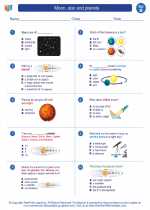Innovation
Innovation refers to the process of creating something new or making improvements to existing ideas, products, or processes. It involves thinking creatively and finding solutions to problems, leading to advancements in various fields such as science, technology, and business.
Types of Innovation
There are several types of innovation, including:
- Product Innovation: Involves creating new products or improving existing ones.
- Process Innovation: Involves improving the methods and processes used to create and deliver products or services.
- Business Model Innovation: Involves changing the way a company operates, delivers value, or earns revenue.
- Incremental Innovation: Involves making small improvements to existing products or processes.
- Radical Innovation: Involves creating completely new products, processes, or business models.
Importance of Innovation
Innovation is crucial for driving progress and growth in various industries. It leads to the development of new technologies, the improvement of products and services, and the creation of more efficient processes. Innovation also helps businesses stay competitive in the market and adapt to changing consumer needs and preferences.
Encouraging Innovation
There are several ways to encourage innovation, including:
- Creating a culture that values and rewards creativity and risk-taking.
- Investing in research and development.
- Providing resources and support for employees to explore new ideas.
- Collaborating with other organizations to share knowledge and expertise.
Study Guide
If you're studying innovation, here are some key points to remember:
- Define innovation and its importance in various fields.
- Identify different types of innovation and provide examples of each.
- Explain how innovation can benefit businesses and drive economic growth.
- Discuss strategies for fostering a culture of innovation within an organization.
- Explore case studies of successful innovations and their impact on society.
[Innovation] Related Worksheets and Study Guides:
.◂Science Worksheets and Study Guides Second Grade. Moon, star and planets

 Activity Lesson
Activity Lesson
 Worksheet/Answer key
Worksheet/Answer key
 Worksheet/Answer key
Worksheet/Answer key
 Worksheet/Answer key
Worksheet/Answer key
 Vocabulary/Answer key
Vocabulary/Answer key
 Vocabulary/Answer key
Vocabulary/Answer key
